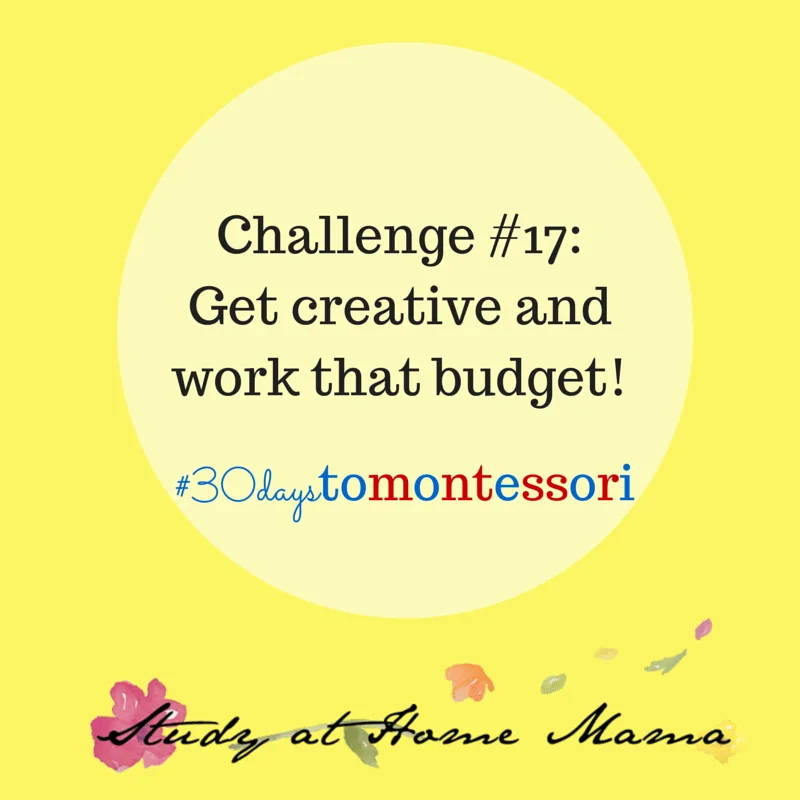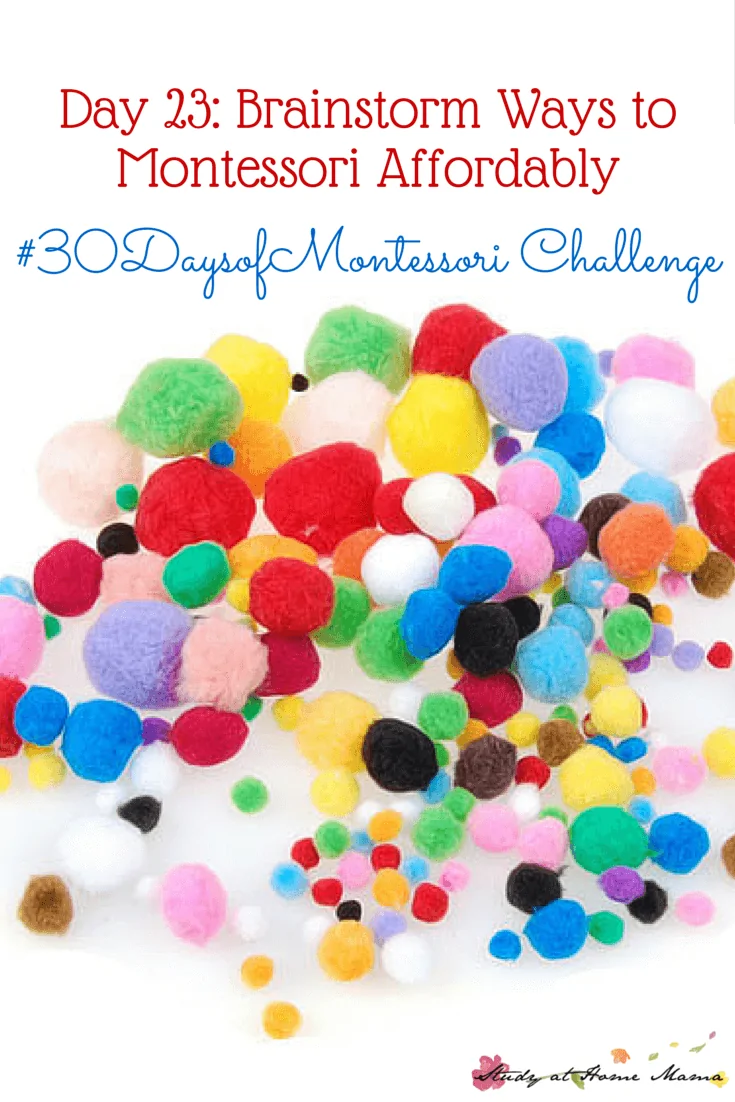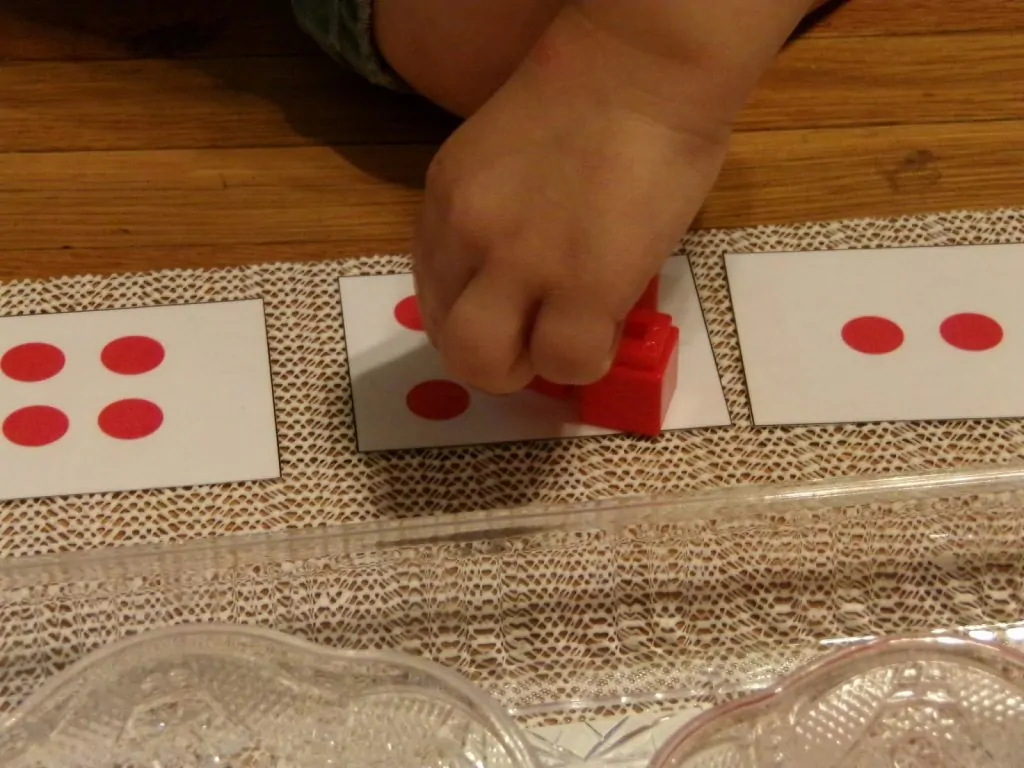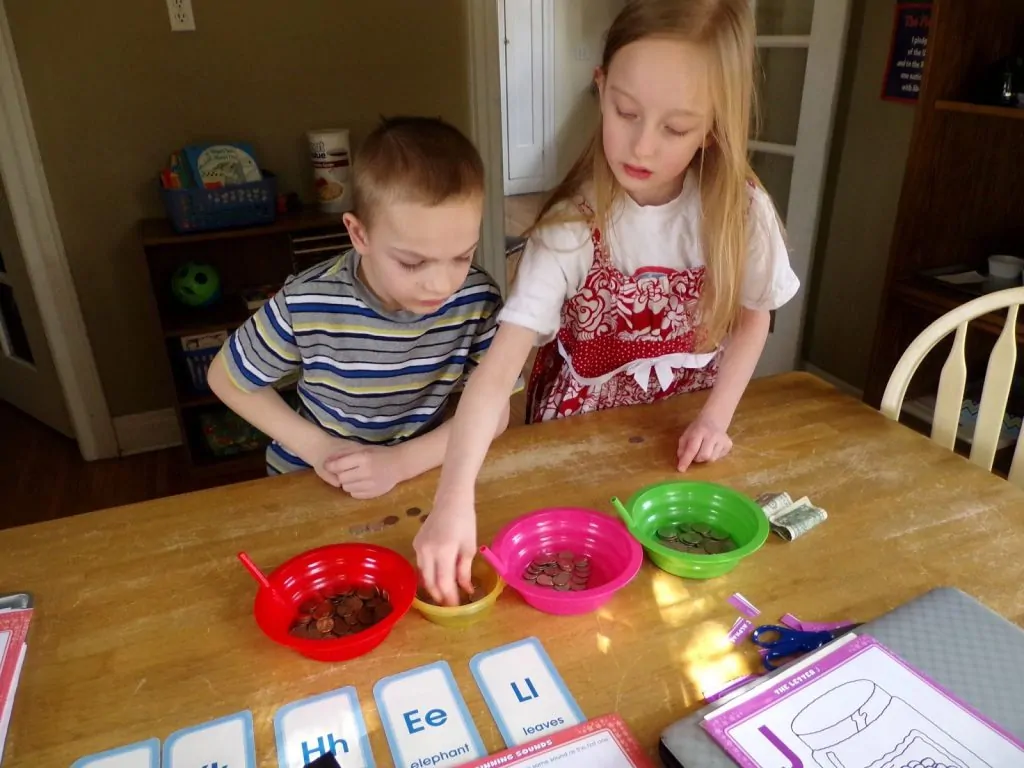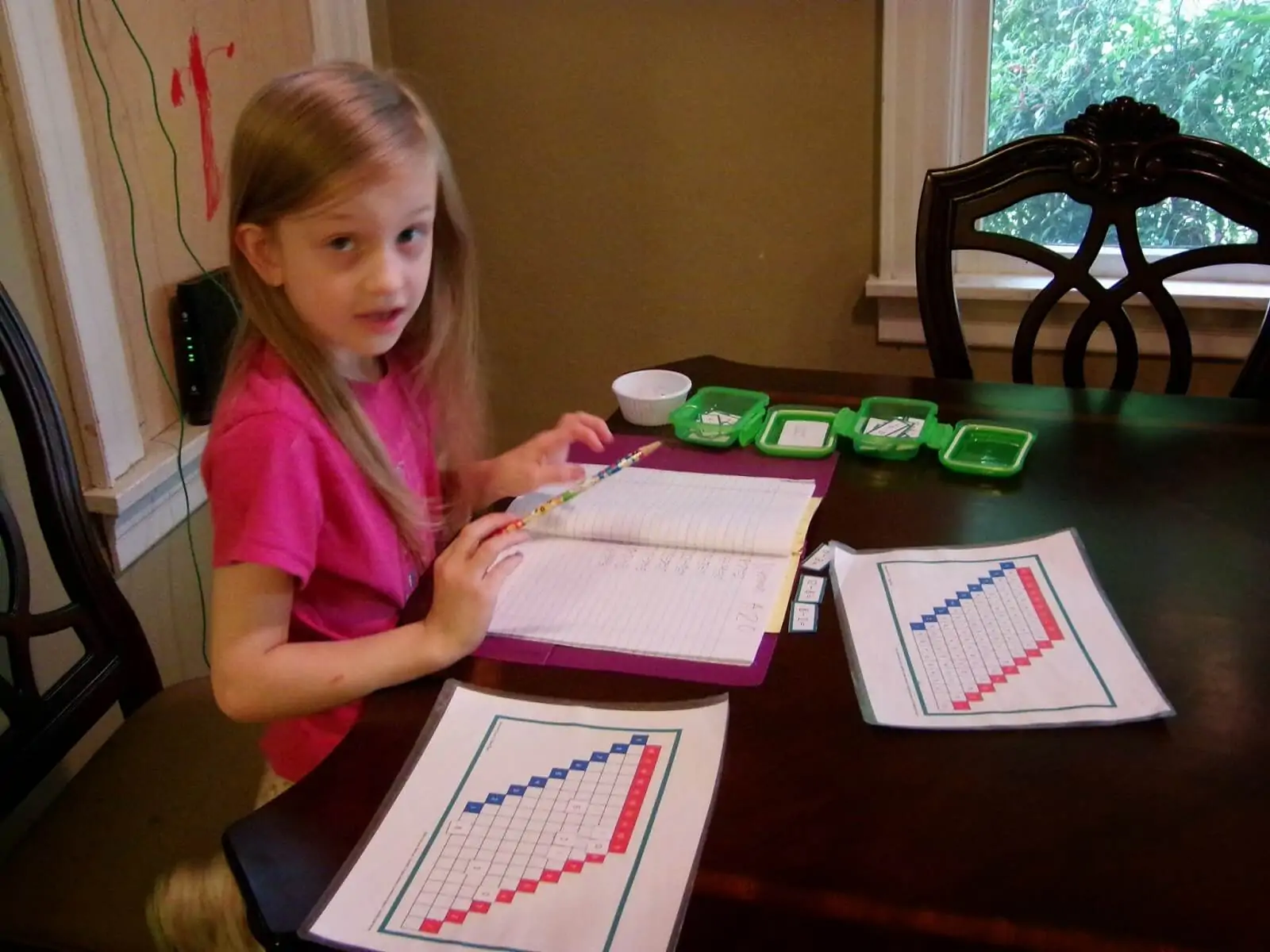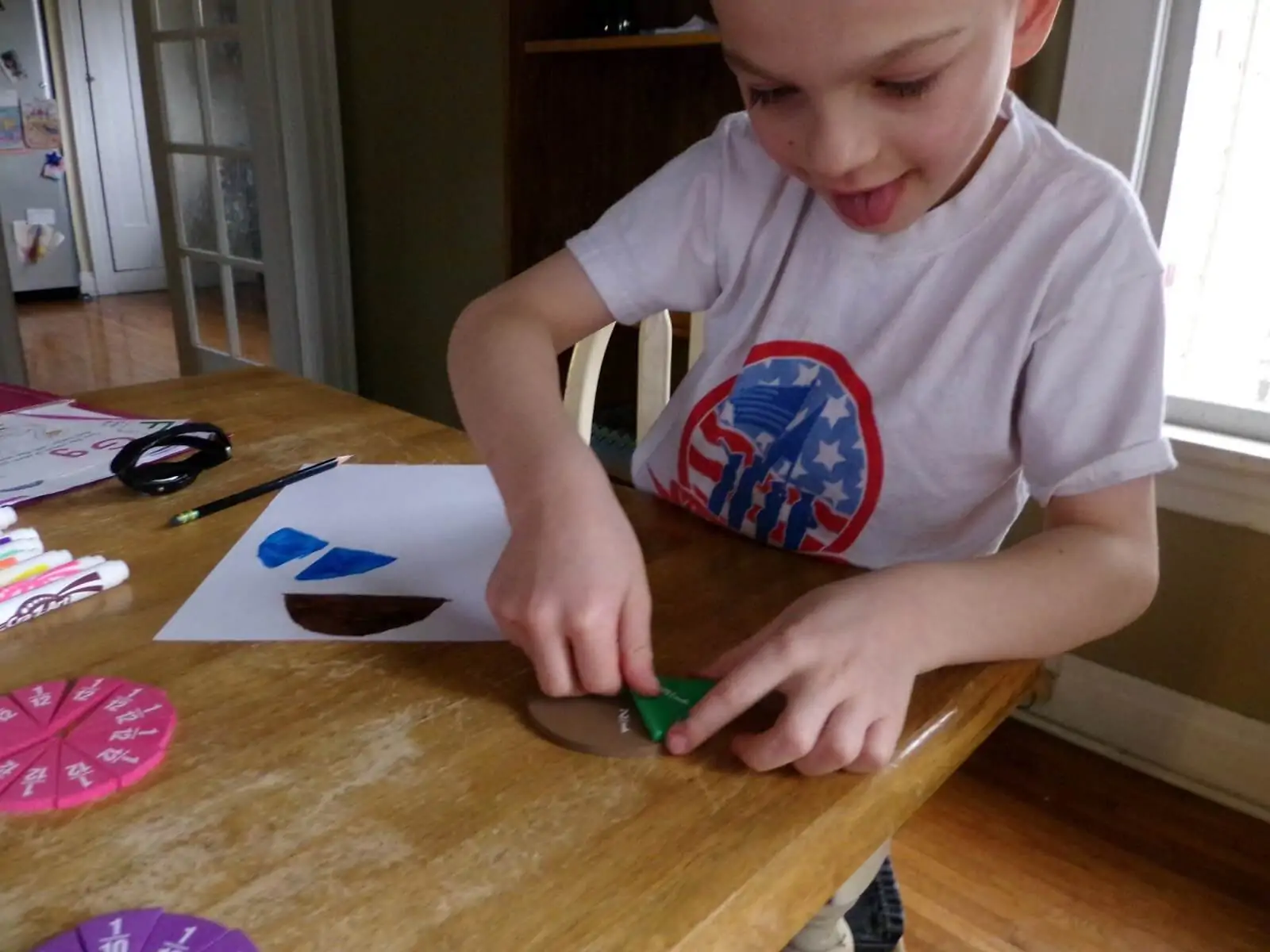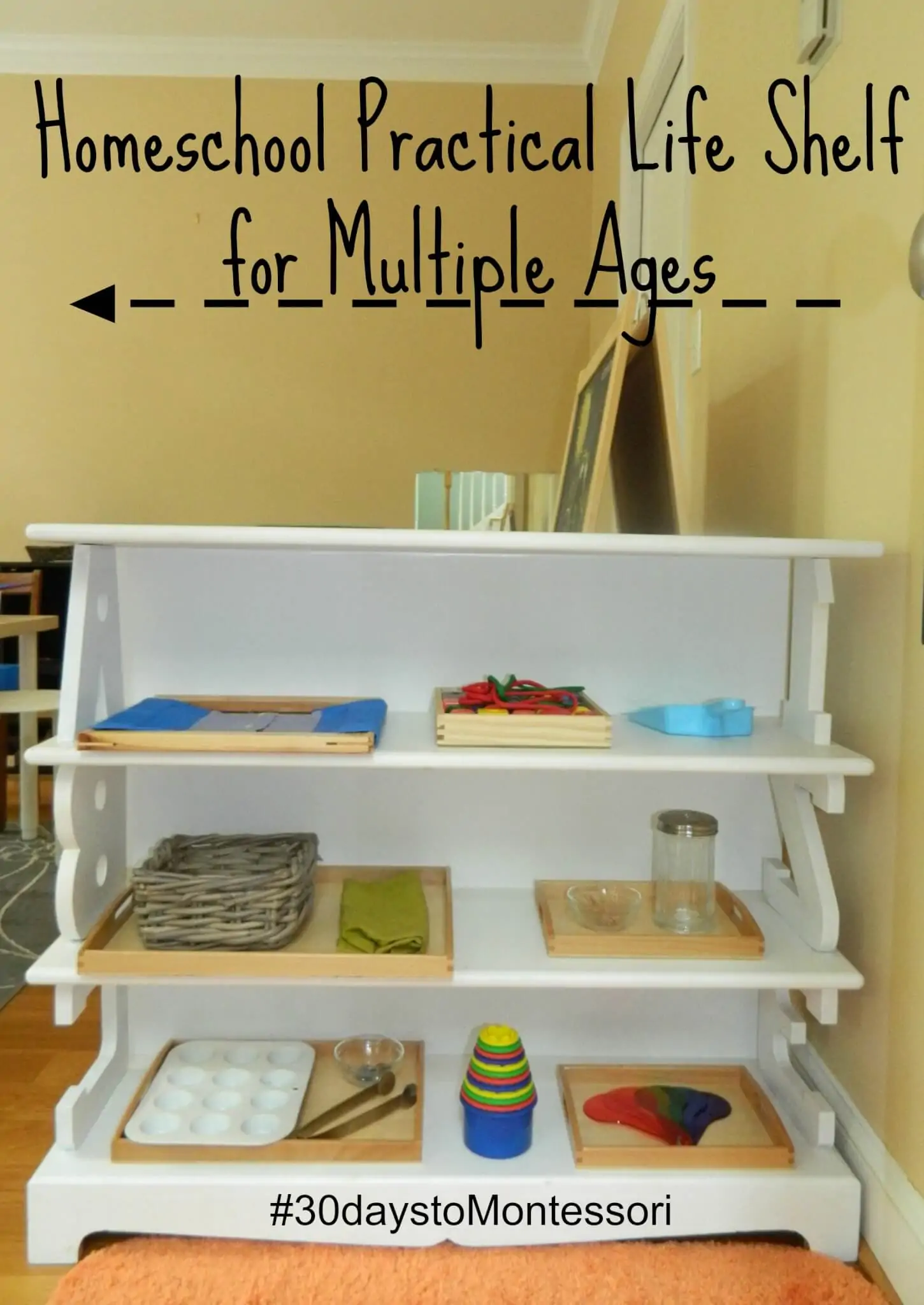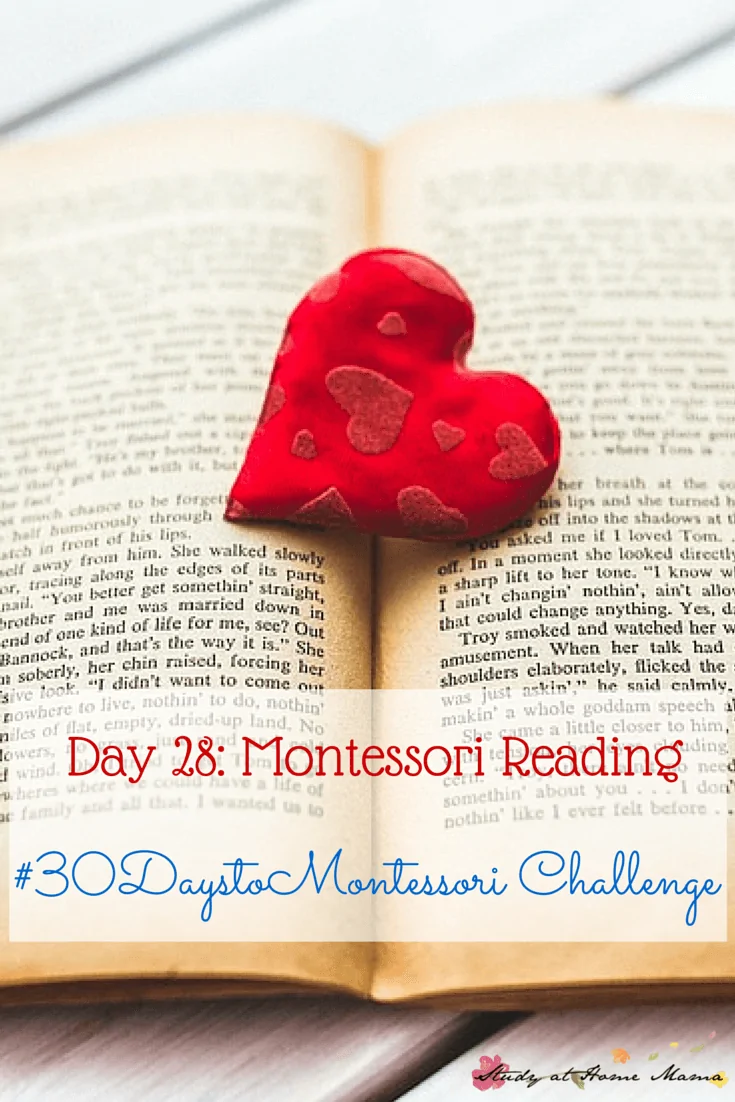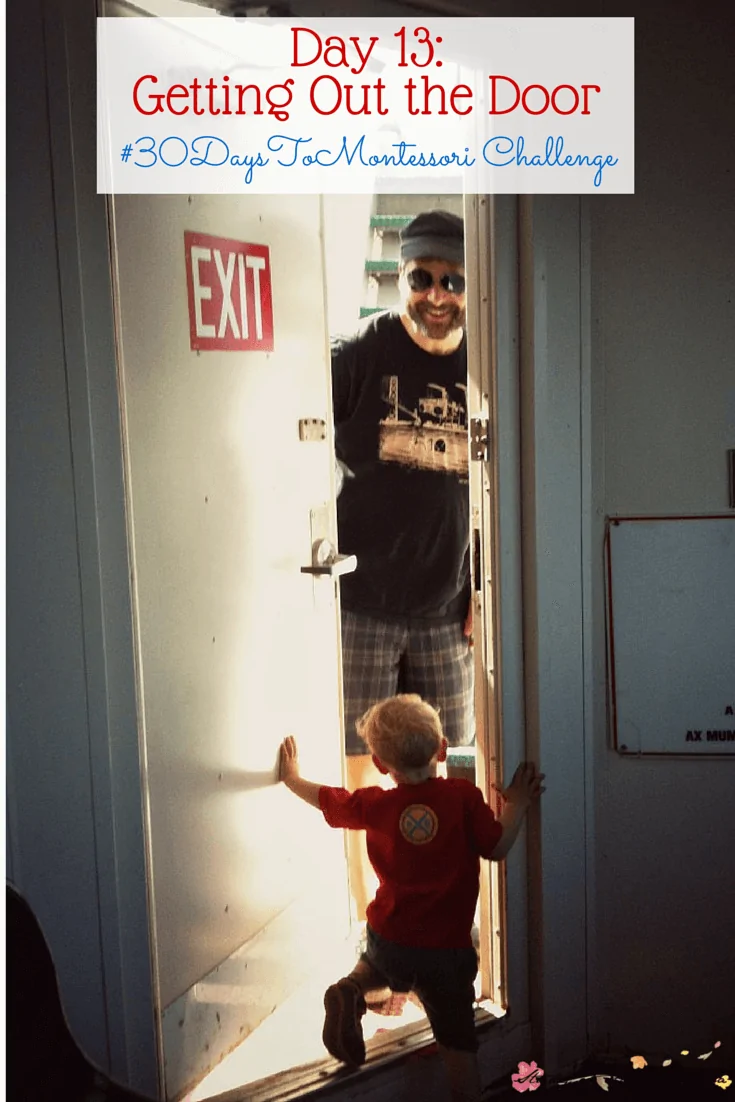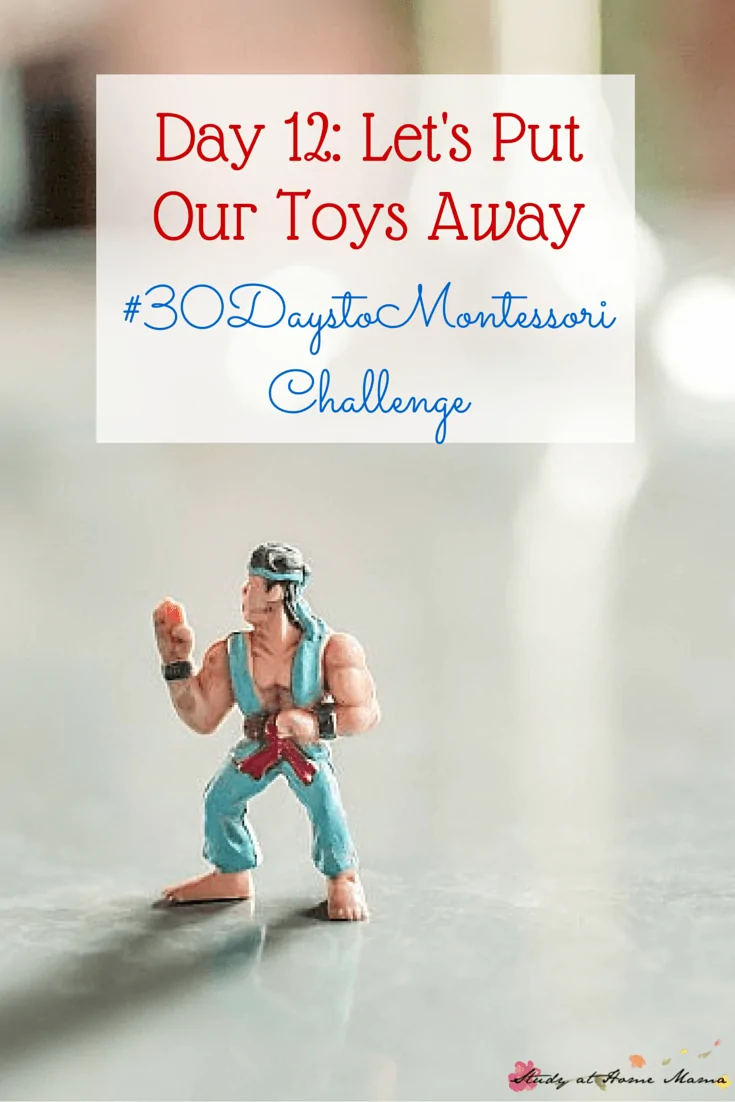Can Montessori Work on a Small Budget?
Today for our #30daystoMontessori challenge I am bringing you a guest post from Amy Warrick of No Greater Honors on how she manages to affordably Montessori homeschool.
She also lists some great resources in this post which I highly encourage you to check out to really develop a well-rounded understanding of the different ways that you can implement Montessori education into your home (or daycare, or classroom).
Day 23: Brainstorm Ways That You Can Implement Montessori Affordably
I won’t go in to a long story of why/how I found Montessori and started using it. If you’d really like to know, you can check out this post – Why We Homeschool.
I’d like to show some ways that I have, with God’s wisdom, made Montessori work for our family, while having a limited budget. Before I begin, I am NOT trying to put down anyone who has invested a great deal of money in to Montessori for their homeschool. Believe me, if I had it – I would! It is completely worth it! There is a saying that goes, “If it’s worth it, you’ll pay for it”. Which is true, if you have the budget. Sometimes, though, you have to make do with what you can do, and make the best of it! I’d just like to share a few tips on how I do that in our home.
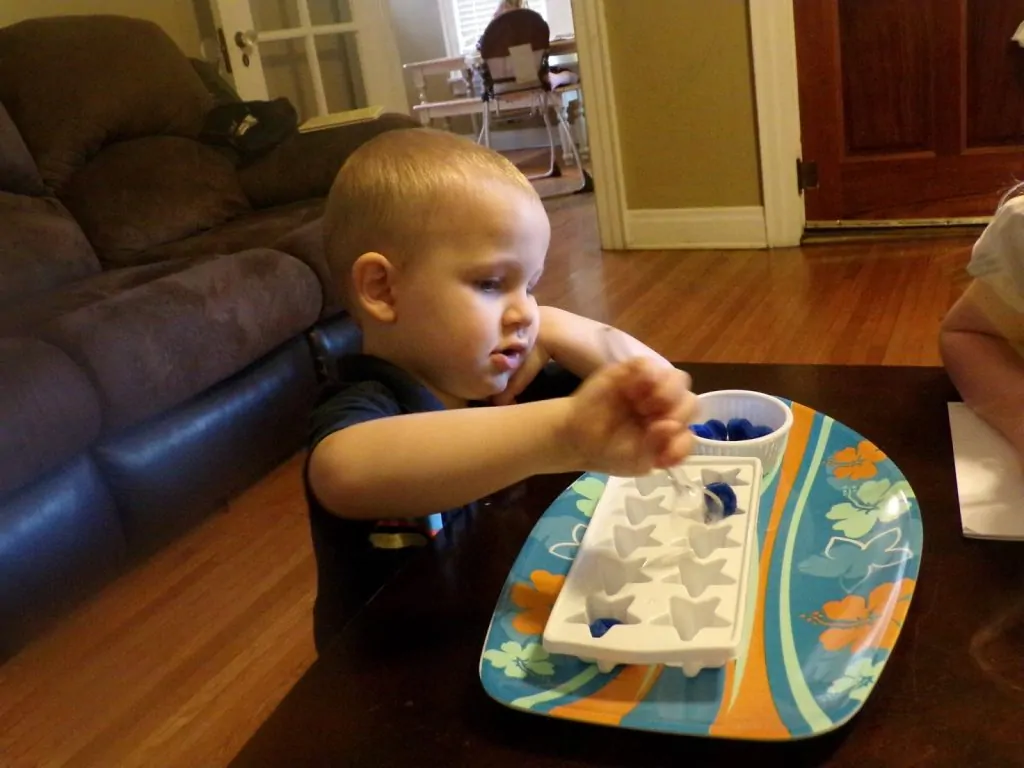
Primary Montessori – Ages 3-6
I currently have two children in the Primary age group in my home. When we started two years ago, I had three. Using things around the home, or things I have found at Dollar stores, yard sales, and thrift stores, I have been able to put together many fun work trays for my little ones!
Fine Motor scooping, transferring, one-to-one, tonging can be done with something as simple as an ice cube tray, tongs/spoons, and any type of small object.
I love using poms, small erasers, or glass gems. All of these items can be found at the Dollar Tree/Dollar Store.
Always check after holidays to find great deals on miniatures or items that can be used to build those fine motor skills, and just as importantly, concentration, self-control, and independence in work!
I also make use of printables any time I can. For example, in this picture, my Buddy Boy was using printable cards and counters from Montessori Print Shop along with some unifix blocks to directly work on fine motor and one-to-one, and indirectly to work on number recognition. There are TONS of printables on the web, many for free, and some for a small cost that can give you a wide range to work with, and that goes for all grade levels!
Lower/Upper Elementary (6-12)
As you move up from primary to elementary levels, sometimes you have to get a little more creative with your DIY materials. This particular picture shows a money ‘work’ (game) that I posted about here – Money, Money, Money!!! (No Greater Honors). There are many websites that offer free downloads of materials that work well in to elementary ages, and anything we’ve gotten from them, we use even to this day!
Some of my favorites are:
Trillium Montessori
Many times, I take a good look at the material itself, and if I can’t DIY it, I try to think of something I can do to serve the same purpose, that is easy to use, teaches the same concept, but does not lose the ability to be an independent material, able to be used with or without the teacher/guide.
As you move in to lower, and even more upper, elementary, I have found that Montessori becomes so much more of a ‘whole life’ teaching approach. Cooking in the kitchen becomes practical life and math, reading and following easy to complex directions.
Allowing your child the freedom to follow their interest, while still giving them the tools, direction, and ability to keep themselves accountable for what needs to be taught – these are all part of the Montessori method that need no fancy materials, no high-cost items.
Allowing time for free choice, such as reading.
Making available materials that mimic authentic Montessori for concrete learning, such as these printable Math charts from JMJ Publishing (a great alternative to the Math memorization charts materials, if you can’t afford to buy them or just don’t have room to store them – both of which were an issue for me!)
And finding alternatives to the traditional materials, such as these fraction circles.
In fact, you can have Montessori without the materials! I loved this post from Jessica at Montessori Nuggets on Montessori Without Materials!
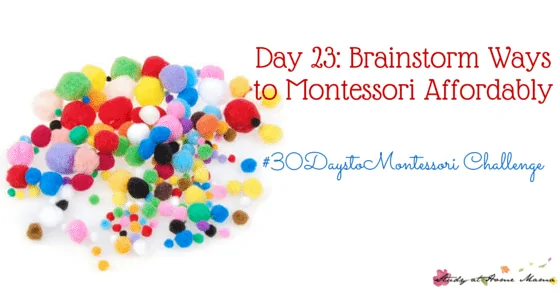 While the materials are all beautiful, you can create a beautiful learning environment without having to have them all, or with DIY activities that are much less expensive. Order is key, and you don’t have to a lot of money for that! 🙂
While the materials are all beautiful, you can create a beautiful learning environment without having to have them all, or with DIY activities that are much less expensive. Order is key, and you don’t have to a lot of money for that! 🙂So, if you have been feeling down or discouraged because you think you will never have what you need, take a deep breath and don’t be hard on yourself! You CAN do it with what you have, and that is the very best thing you can do for your child, is to take what you do have and make it work instead of trying to wait until you have everything!
Happy Homeschooling!
